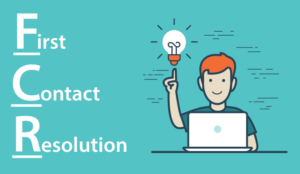Genesys discuss the challenges of using First Contact Resolution (FCR) as a contact centre metric, before discussing how to get more from the measure.
Hand on heart: how often does your service team address the customer’s need the first time they call? Is it the most important thing to your operations team, or have you been focused on driving down time to answer and average handle time?
Low AHT combined with poor first contact resolution rates can be a sign that you’re not truly putting the customer first.
UK retailers are facing one of the most competitive environments in decades, and first contact resolution is a key weapon in the battle for consumer trust and loyalty.
Customers will forgive any brand a multitude of sins if their problem, such as a faulty product or delivery issue, is fixed without friction, but are quick to condemn a brand that passes them from pillar to post.
Admittedly, FCR can be a tricky ball of string to untangle – particularly because so many other operational metrics are affected by and have an impact on it.
You need to be able to reliably measure FCR to understand the opportunity for improvement (and whether any programme you implement is working), and you need to understand the underlying issues driving repeat calls in the first place.
It’s not realistic to believe that every single issue can be resolved at the first attempt without further research, work or collaboration. As mundane tasks are increasingly automated, customer queries are becoming more complex, and it’s not always possible to provide an immediate answer.
However, if the caller ends up having to repeat their tale of woe to multiple agents, the experience becomes painful and satisfaction levels plummet.
Some organizations are now using advanced speech analytics to try and determine why the customer’s issue wasn’t resolved on the first call, and measure the number and type of repeat calls generated by each agent. This enables a targeted approach to agent development and SLA improvement.
But you also need to empower your agents to respond in ways that really move the needle on customer satisfaction.
With a tightly integrated omnichannel CX solution, you can harness both the customer’s interaction history and back-office data. This gives you the opportunity to intelligently route enquiries to agents with the appropriate service skills who have full visibility into the what, when, where, who and how, so the customer isn’t forced to repeat the entire backstory.
FCR is neither a quick nor an easy win. However, it’s an important metric to master, not just as an indicator of your contact centre’s operational effectiveness, but as a barometer of customer emotion.
Author: Robyn Coppell
Published On: 15th Nov 2019 - Last modified: 20th Nov 2019
Read more about - Guest Blogs, Genesys



















